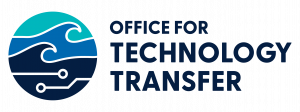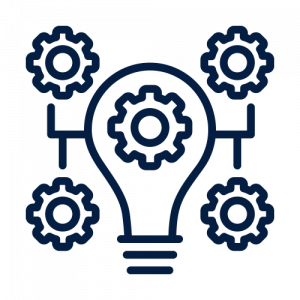Startup Spotlight: Q+A with ARMADA Marine Robotics, Inc. Founders, Jeff Kaeli, Robin Littlefield, and Rusty Warren
In 2017, WHOI engineers Jeff Kaeli and Robin Littlefield entered the WHOI Office for Technology Transfer Pitchathon, intending to win translational funds to advance what was then just an idea, the Asymmetric Thruster. This novel propulsion system, now a patented and demonstrated technology, produces forward thrust - as with a traditional multi-bladed propeller - but what is unique about the Asymmetric Thruster is that it also allows you to steer without any additional control surfaces. By altering the speed of rotation within a single revolution using just a single blade - the Asymmetric Thruster both propels and maneuvers. The simplified design, eliminating the need for fins, rudders, and additional motors, reduces weight, drag, and cost.
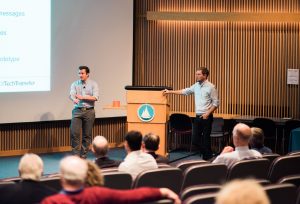
Jeff Kaeli and Robin Littlefield presenting at WHOI Pitchathon
During the Pitchathon competition, Jeff and Robin teamed up with a business mentor, Rusty Warren, who provided business insight into commercialization to successfully win the funding. Two years later, the team licensed this innovative technology, launched a startup company: ARMADA Marine Robotics, Inc., and are now looking to revolutionize marine submersibles. We sat down with the founders to discuss the process of getting their technology off the ground, launching a company, and their hopes for the future of this new venture.
Q: Can you describe your professional experiences and backgrounds?
Jeff Kaeli (JK): I was a graduate student at Woods Hole as part of the joint WHOI-MIT program, and then once I finished that, I began working on AUVs and a variety of technology surrounding underwater robotics in the Ocean Systems Laboratory [OSL], focusing mainly on autonomous applications.
Robin Littlefield (RL): I came to WHOI with a degree in mechanical engineering. I started out doing work with gliders and floats, focusing on physical oceanography. I ended up going on cruises with OSL and traveling around the world supporting AUV operations; I was able to bring that knowledge from working at sea to the engineering process and now see the whole process from start to finish--which is very rewarding.
Rusty Warren (RW): I started as a scientist interested in research and neurobiology, and psychology. Over the years, I migrated to a management role focusing on technology development and found myself in government contracting, working with large and small businesses. I enjoyed working with small businesses and found myself working with a startup business in Boston's medical devices field. Then I retired down to Falmouth. I got involved with WHOI and the Office for Technology Transfer; I got to know the people and enjoyed working with them, and got more involved in transitioning innovations from lab to commercial opportunity.
Q: What was the motivation behind developing the Asymmetric Thruster?
RL: The origin story goes back to our old lab manager Tom Austin. He, Ben Allen, and Mike Purcell were running REMUS operations, and one vehicle broke all but one of the propellers off in a collision with the sea floor. Amazingly, the vehicle kept running throughout the mission, so it prompted the idea: if you can run the mission with a single-bladed propeller, maybe you can also use it to turn and steer it. The motivation is to greatly simplify the propulsion system. Tom Austin pitched the idea to us, and we took the idea and ran with it along with co-inventors Ben Allen, Fred Jaffre, and Mike Purcell. Eventually, we were able to get a patent from WHOI and the Office for Technology Transfer. We received internal funds through the WHOI Pitchathon to advance the technology, which has led to ARMADA.
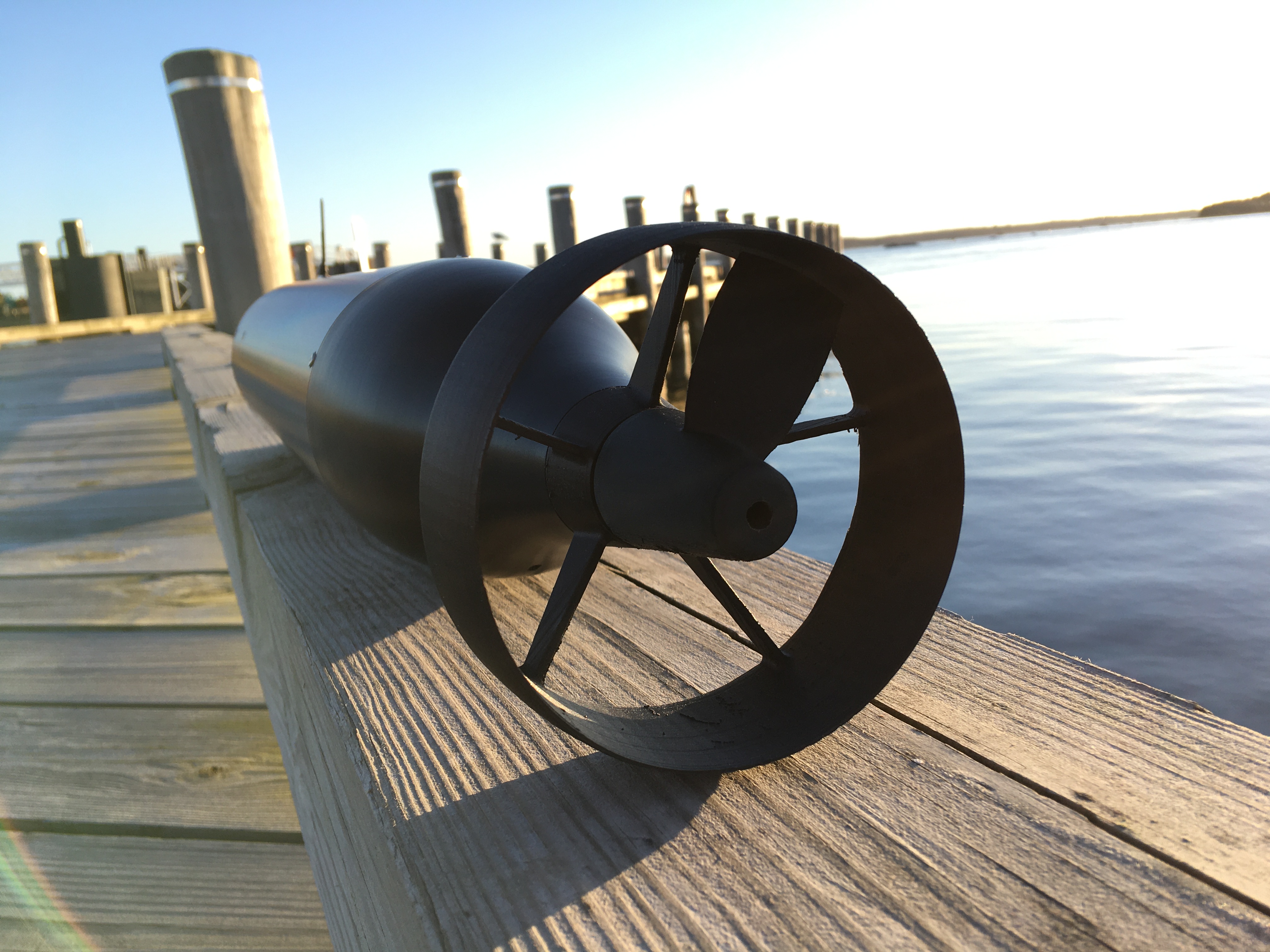
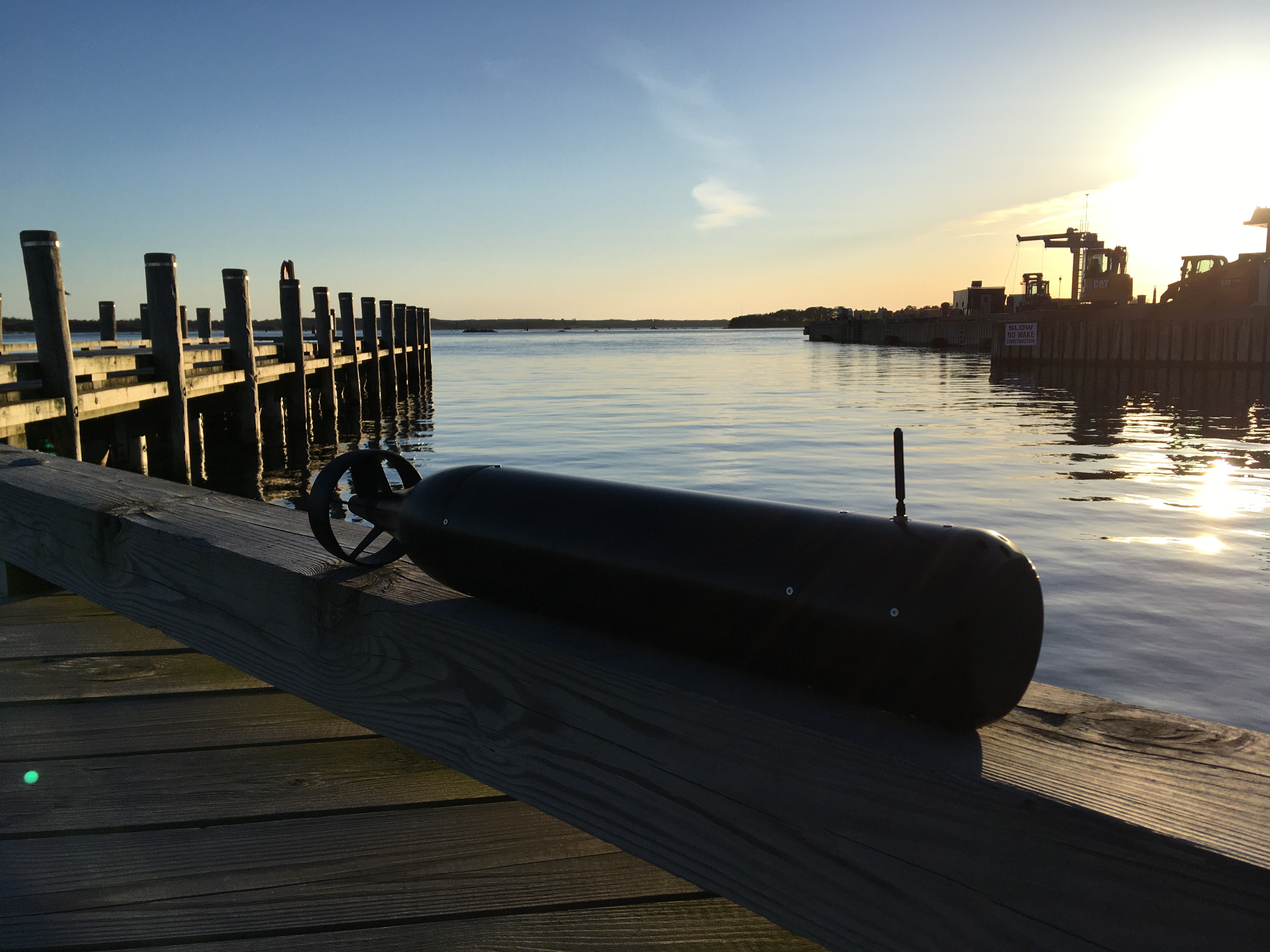
Thruster mounted on a test hull to support the development of vision-based navigation and station keeping (courtesy of ARMADA Marine Robotics, Inc.)
Q: How did you [Jeff and Robin] get connected with Rusty?
JK: There was a cool new funding opportunity at WHOI through the Office for Technology Transfer called the Pitchathon. It was designed to push innovations developed at WHOI to make it something more licensable or marketable. Each team was assigned a business advisor who provided business input that you don't necessarily think about when you are submitting a [research] proposal, such as: "Who is going to buy this?" or "What is the market size?" And that is how we connected with Rusty.
RL: We were really fortunate to get partnered with Rusty as a business advisor, and the fact that OTT facilitated that is not insignificant. These types of connections can be hugely valuable to the WHOI community.
Q: Were you always considering the startup route?
JK: I think everyone in our generation has the dream of starting their own company at some point; it is just a matter of what the product is and who the customer is. When we started with this, there was no concrete plan of "We're going to have a company." We invented a cool new technology at WHOI, and around the same time, the Pitchathon was starting at WHOI. After two rounds of those proposals in the Pitchathon, we got talking, and we're thinking about the different pathways--building a vehicle, or just licensing, or only building a propulsion system and just selling that. At that point, we decided a startup would be fun, we had a cool tech and a patent that we could negotiate a license with WHOI for, and the rest is still being written. It has been a lot of fun so far.
RW: From my perspective, when I started with WHOI and working with the Office for Technology Transfer, I had no intention of a startup. I would go to meetings and contribute where I could and meet some interesting people, and then I got more and more involved and met Jeff and Robin. They had a very interesting technology, and they were terrific guys, and I said: "If I am going to do this one more time, this would be the team I would want to do it with," so I jumped in.
Q: What excited you most about the technology that made you say, "Okay, I want to be a part of this?"
RW: For me, it was something I could understand; it also seemed to enable us as a species to learn more about the ocean in a more efficient way than was possible in the past. There were lots of little nice things about it, learning more about the ocean in a more environmentally friendly manner. It was a technology, from a business perspective, that was easy to explain to people. There are many attractive features to this that made me want to be a part of it.
Q: Can you describe what it was like going through the startup process?
RL: Rusty really made it smooth-sailing for us. His experience in business and running companies in the past made this much easier than it would have been for just Jeff and myself to try to make it work. He's helped us understand the process along the way as well, now we have the experience of going through it all and hope to be able to extend some of the same knowledge to others trying to do the same thing.
RW: I tried to unburden Jeff and Robin from the business details and engage them in what is going on; their role is to really focus and develop the technology. But we went through the process of building a founder's agreement and had those discussions upfront, asking: what is the company going to be, and what are our respective roles going to be? Do we have a strategy? And how are we going to execute the strategy? Those are big questions, and it is important to ask them upfront and struggle to find the right answers, even if you decide to change the answers later. Once we got the win, we had to continue building the company's infrastructure, getting accounting, a website, and office space. I engaged Jeff and Robin in answering questions and making decisions; I tried to do a lot of the background work to focus on what they do best.
Q: What was it like to apply for SBIR funding?
JK: I heard SBIR proposals are hairy beasts, and I'd have to say, having gone through it, they are not wrong, but it was not dramatically more difficult than other proposals I have worked on in the past. It was more of the kinds of information and the background research you have to do to get there. The Phase I idea is to pay down the risk for the Phase II, which might be developing a commercial prototype. You are talking about things like: "What is your commercialization plan? What is your market size? What is your market?" A lot of the administrative work--budgets and other stuff that administrative professionals typically do--fell to me, which gave me a huge appreciation for administrative professionals' jobs.
RW: We do have a slight advantage, that we all had experience submitting government proposals. I had some familiarity with the process of submitting SBIR/STTR proposals, so there were no real Earth-shattering events that happened; we knew what we needed to get done.
Q: How long did the whole process take, from idea to where you are now?
RW: It seemed like 8 or 10 years, but I know it wasn't that long!
JK: About 2 years, give or take 6 months.
RW: Jeff and Robin, who had never incorporated before, had some hesitation and questions, and my job was to answer those questions. We did a lot of back and forth for several months, and eventually, we got to where we needed to be.
Q: What was the process of advancing the technology to get to the commercial prototype stage?
RW: We have a strong vision of the steps we need to accomplish for our Phase II NSF Proposal. The standard Technology Readiness Level is a chart of steps that you have to go through to get where you need to be, and that really helped guide our thinking. We have to refine our capabilities to the point where the innovation can do it in open water and do it in a more realistic setting. Eventually, we'll be ready to engage commercial partners for testing, have the commercial prototype go head-to-head in a realistic environment, and beat the competition. If we can do that, we have a successful product and hopefully a successful business.
JK: We are really excited about the next phase of this!
Q: What are your goals for the future of ARMADA?
RW: From a business perspective, I would love to build a great small company with a great product that customers love, and we get a bunch of loyal customers that think we are just terrific. Also, we have to make some money to keep it going. I think that would follow if we have a great product and a great company.
RL: We want a company that will continue to grow based on the technology we develop and the pull from customers. We want to see this thing really take off.
JK: Only thing I would add, I see this as maybe the first company that I start or help to start. This might be a fly-wheel mechanism for more to demonstrate how technologies can be spun out of WHOI and set loose and come back to WHOI and figure out what the next big thing is to invent.
RL: I love that; I really want to see this build momentum within the WHOI community to push more technology outside.
Q: What is one piece of advice you would give to someone interested in developing a startup?
JK: Talk to people! Talk to people who have done it, people who are interested in doing it. Reach out to other technologies, companies, and even customers who might be interested. One of the things that we as a group have done well is pool our network together, make other cold-calls, and really get a sense of where our technology could fit in the world and who some of the key players are. Don't be afraid to talk to people. Our best advice came from the WHOI community. The people you work next to might have some information that may be useful.
RW: I agree with Jeff, talk to people who have done what you are thinking of doing, and you'll learn a lot, and you'll have a better decision-making process.
RL: You'll get feedback regarding people's interest in your ideas. This feedback helps you engage in how those outside our own development work and community will receive the technology. That is something you certainly want; you want people to be interested in what you are developing. It's also really important to have a good team. Starting your own company requires more work than is reasonable for any person and requires expertise that exceeds what is reasonable for anyone to be capable of doing.
RW: Going off what Robin said, it is hard to overemphasize there is a saying among investors in startup companies: "You can invest in an A team with a B plan, but you can't invest in a B team with an A plan." The people are a place to start; a great team can do almost anything.
Learn more about Armada, the team, and the technology by visiting their website: https://armadamarinerobotics.com
